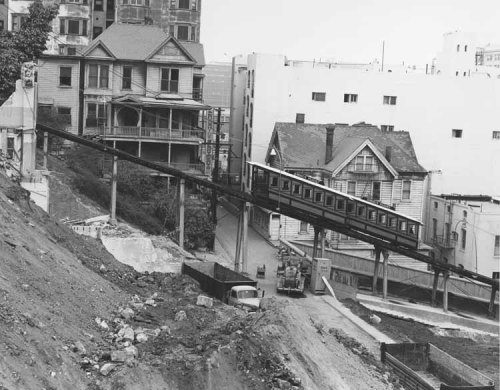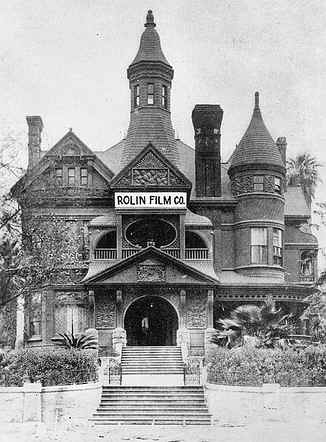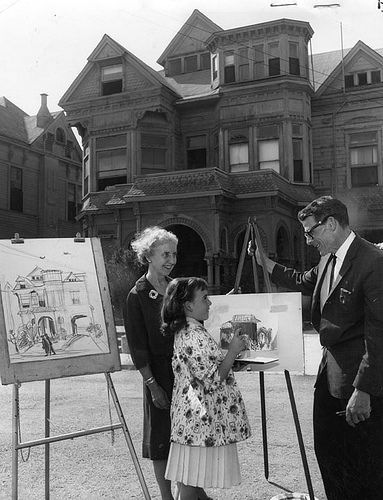|
The
memory below is Chapter 2 of My Life History |
|
|
|
www.messynessychic.com/2013/07/25/the-lost-victorian
mansions-of-downtown-la/
|
|
Despite once attracting high-income residents with its fashionable apartment buildings, By the 1920s, Bunker Hill had become a working class lodging district. The once thriving leafy ... After the Great Depression, the grand old Victorian mansions were run-down and being used as cheap apartment hotels.
I was relieved to learn, as an adult and got interested in history, to find that Bunker Hill history had been saved in the preservation of some of the Victorian mansions. It was through the efforts and attention of artist Leo Politi that the Los Angeles history of Bunker Hill is known and appreciated. Especially well known for his children's books;. however, he verged into adult books to the most innovative which was the hills, a series of paintings of this stately Victorian houses which populate advanced section of downtown before the skyscrapers irrevocably altered the landscape In total third 30 books and illustrated an additional 15 to 20. In scrolling through photos this one attracted my attention. It seemed very familiar to me. Research revealed it was was referred to as the Castle. Located at 325 S. Bunker Hill, it appears it was among some of the few Victorian mansions preserved as part of the history of Los Angeles. Leo Politi immortalized the Bunker Hill mansions with his art. |
| M | ||
|
|
||
|
Jean Bruce Poole, historic museum director of the El Pueblo de Los Angeles Historic Monument. She knew Polti since 1977 when he painted the mural "the Blessing of the Animals" on the side of the Biscailiz building, depicting the annual Olvera Street event. "His paintings were always very sweet," she continues, " they were not of people in sorrow or agony or distress. He painted people as he like to see them, happy and enjoying life and being good." In preparing this chapter, it made me more aware of the heartache associated with migrating families and individuals, the confusion of separation from loved ones, challenges to adjust to the new. The dissociated from the familiar, . . . growing, changing, adjusting. Our ancestors did, and many of us did also. Remembering helps heal memories and increases understanding. Recently one of my cousins repeated a thought that I shared with her long ago, concerning my father's death. She said I told her, "My one regret about my relationship with my dad, was not being able to know my father . . . as an adult." I hope you accept the challenge and start writing your own personal family history, for yourself and for others. The ten questions which I answered are in the Family History section. |


